Five charts that tell the story of diversity in UK universities
Attention has turned to the lack of diversity at the UK's top universities once again, as the University of Oxford publishes its admissions figures.
While Oxford says that the proportion of its undergraduate students from the UK who identify as black and minority ethnic rose from 14% to 18% between 2013 and 2017, Tottenham MP David Lammy says students are twice as likely to get in if they are white compared with their black counterparts.

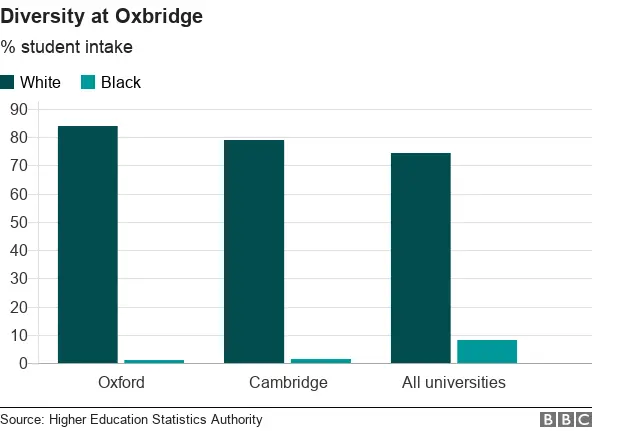
On average in 2016, 8% of first-year undergraduates across the UK were black. In the same year, 1.5% of the University of Cambridge's intake was black, falling to 1.2% at Oxford University, according to the Higher Education Statistics Agency.
Oxford says in 2017, 1.9% of students admitted were black.
Oxford and Cambridge both admitted higher proportions of students from Asian and mixed-background minority ethnic groups. This is in line with the national trend.
According to the latest census, in 2011 about 3% of people of all ages in England, Wales and Scotland identified themselves as black. In Northern Ireland, black ethnic groups accounted for less than 0.1% of the population.
'Prestigious' universities
The Russell Group is a collection of 24 prestigious "research-intensive" universities, often considered to be the most elite in the country.
They have on average much smaller proportions of black students than other universities - less than 4% compared with the UK average of 8%.
They do better on average than Oxbridge at admitting black students - but that doesn't mean Oxford and Cambridge are the worst universities for diversity.
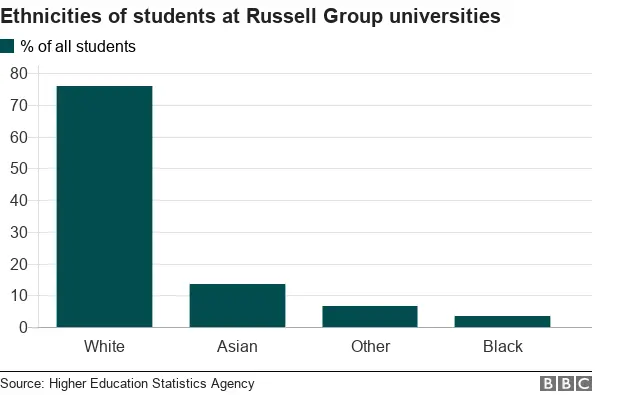
Within the Russell Group, there are significant variations - at Queen's University, in Belfast, fewer than 1% of students are black; while at Queen Mary University, in London, 10% of students are black.
Among non-Russell Group universities, however, there are also big variations, with the proportion of black students ranging from 0% to 38%.
Universities overall
Black and minority ethnic students of all backgrounds are actually punching above their weight when it comes to representation at university.
Black students make up 8% of the UK university population but about 4% of 18-24-year-olds in England and Wales. Data broken down by age and ethnicity is not available for the whole of the UK.
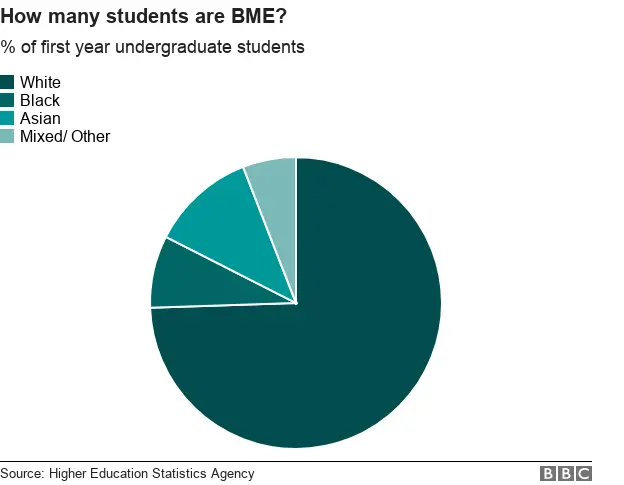
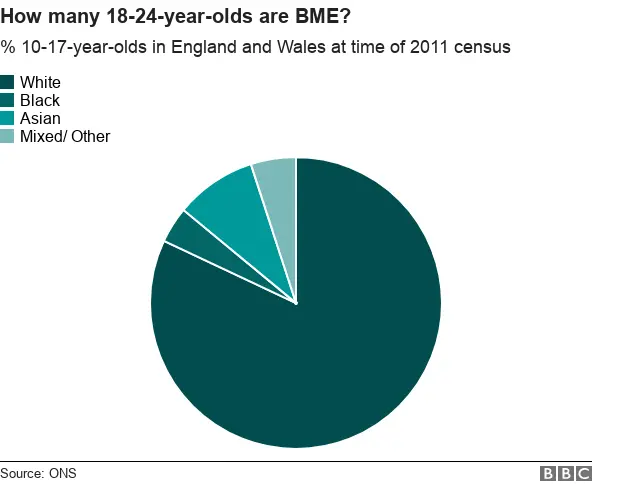
Just over 10% of students in this data are aged over 25.
But researchers at the London School of Economics say "candidates from some minority groups tend to be concentrated in less prestigious institutions".
A study in 2014 indicated that university applications by candidates from a range of minority backgrounds - including black African and Caribbean, Pakistani, Bangladeshi and Indian - were less likely to result in the offer of a place, even once factors such as educational attainment were controlled for.
The researchers said: "Ethnic and social class differences in offer rates could not be fully explained by differences in academic attainment or patterns of application."
The University of Oxford reported that 41% of applications from UK-based black students from 2015 to 2017 were for medicine and law compared with 12% of applications from white students.
So, this tendency to apply for highly competitive courses may also be a factor.
Regional differences
The ethnic backgrounds of students also vary greatly depending on where their universities are in the UK.
Whilst almost all students in Northern Ireland are white, less than half are in London.
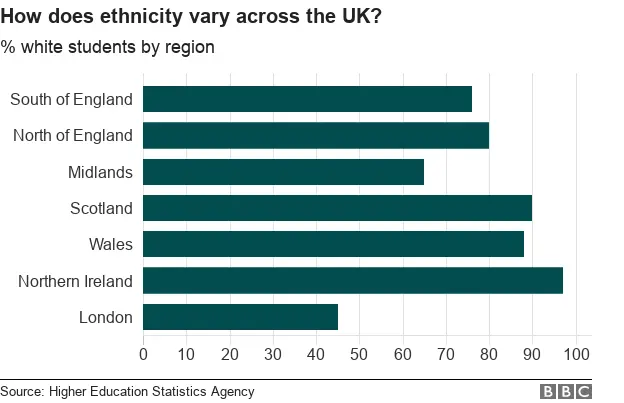
London has the highest proportion of black and Asian students, making up 17% and 25% each.
The West Midlands has a high percentage of Asian students - one in five.
The three universities with the biggest black student populations are all in London: London Metropolitan, the University of East London and the University of West London, where black students make up more than a third of all first-year undergraduates.
For all black and minority ethnic groups, the top universities are City, part of the University of London, Bradford and the London Metropolitan University.


